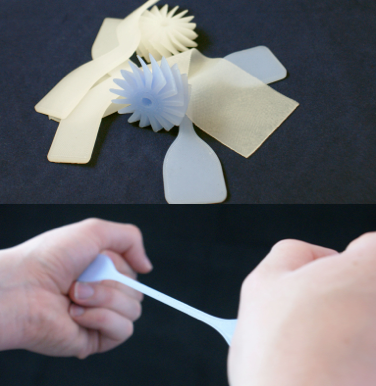For some time I have been in touch with the team at Fripp Design and Research, a leading industrial and product design practice here in the UK, that has been developing a proprietary new 3D printing platform that specifically prints with silicone. Much of the insight I have gained has been under NDA, and remains so, but next week the company will go some way to unveil what it has been up to. When the TCT Show opens its doors at the NEC in Birmingham next week (one of my favourite shows, but not one of my favourite places) Fripp Design and Research will introduce visitors to its new bureau service for 3D printing silicone for a wide range of applications. The service is all set to go live in 2015.

Tom Fripp continued: “Because we are using commercially available silicones, we are creating 3D printed parts with the material characteristics provided by the source manufacturer, but without the need to create a mould and then vacuum cast; we simply 3D print them. That means we can make parts very soft, extremely durable and capable of being sterilised if required and we take out an entire process compared to other polymer based 3D printing technologies; who needs to cast silicone anymore?”
The company is already making parts for beta test site clients and reports stellar feedback, but now want to open up the possibilities of 3D printing with silicone to a wider audience. “Like all our Industrial Design projects, client feedback is an essential element of a successful project. TCT is a fantastic opportunity for us to show test parts so we can gauge the response from the 3D printing industry as we continue to fine tune the technology,” concluded Fripp.
The company has also reported that it can achieve printed parts with 10 Shore A properties with temperature ranges from -30OC up to 250OC. This, they say, produces performance levels never achieved before with 3D Printed Silicone. The applications for 3D printing silicone directly are diverse, specifically across medical disciplines.
If, like me, you’re heading to TCT next week, the Picsima parts can be found on the Fripp stand — K31.



